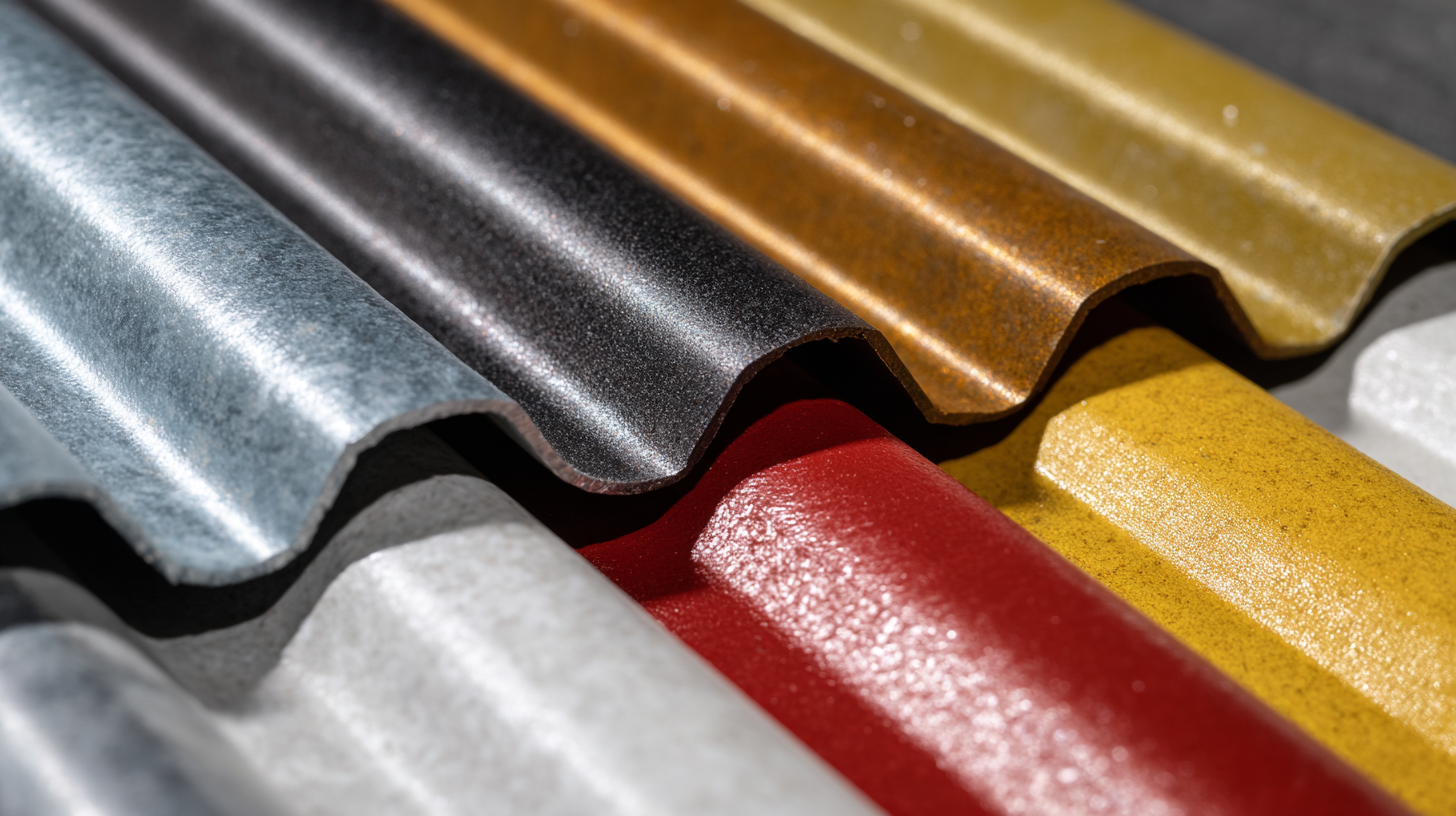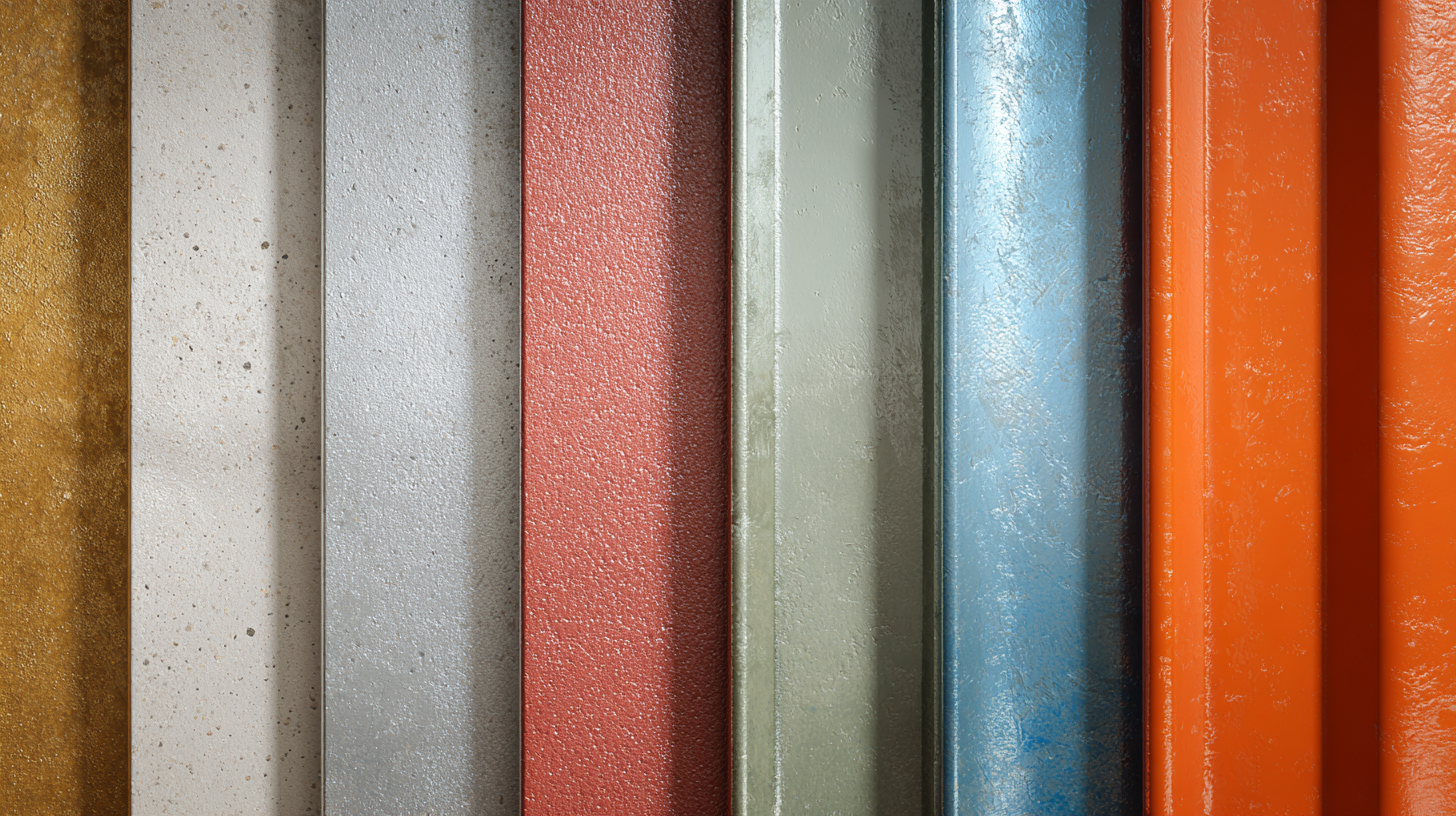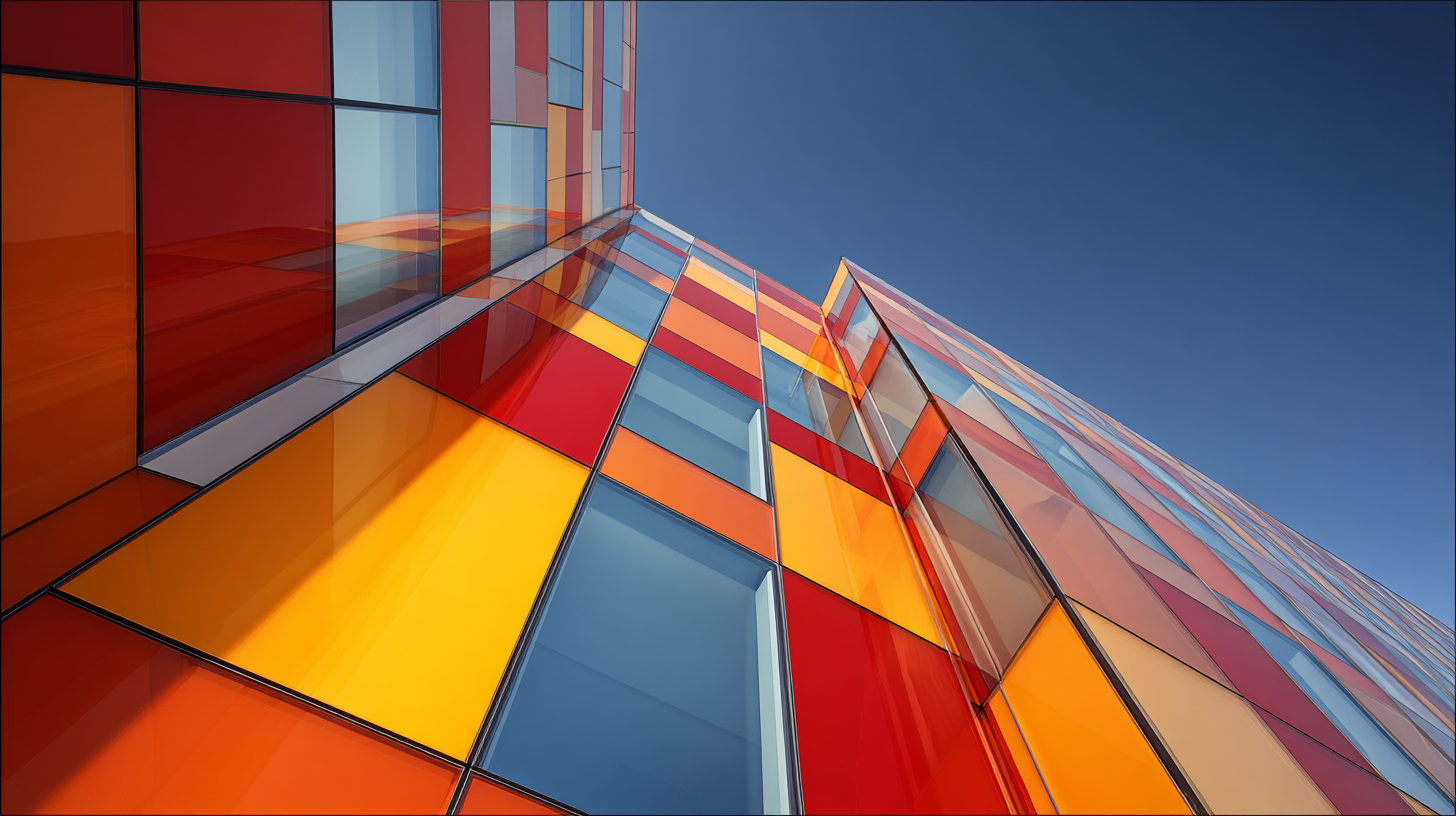Introduction: Outdoor architectural elements like metal façades, roofs, and fences endure constant exposure to sunlight. Ultraviolet (UV) light, in particular, can significantly impact the performance and appearance of sheet metal coatings over time. For galvanized sheet metal (steel protected with a zinc layer) that is further coated with a colored polymer finish, UV exposure is a critical factor in long-term durability. Understanding how UV light affects various coating types — polyester, PVDF, polyurethane, plastisol, etc. — helps in selecting the right protection for outdoor applications. In this article, we examine the UV resistance of common galvanized steel coating systems, compare their performance in different climates (from Ukraine’s conditions to harsher sun environments), and provide real-world insights on maintaining color and integrity over decades.
How UV Light Affects Coatings on Galvanized Sheet Metal: Polyester vs. PVDF and More
UV Exposure: A Key Challenge for Outdoor Metal Coatings
Sunlight carries UV radiation that gradually breaks down many materials. UV light affects sheet metal coatings primarily by attacking the chemical bonds in the coating’s resin (binder) and by degrading pigments. Over time, this UV-induced degradation leads to fading, loss of gloss, and a chalky surface residue (called “chalking”). Chalking is the formation of a white, powdery substance on the coating surface as the resin deteriorates. Fading is observed as a color change or loss of vibrancy, measured in industry terms by Delta E units (where a change of more than 5 ΔE is usually noticeable). In practical terms, prolonged UV exposure can leave a once-vibrant fence or façade looking dull and aged. Moreover, UV damage can make coatings brittle or prone to cracking, especially if the material loses flexibility. Once cracks or peelings occur, the underlying galvanized steel can be exposed to the elements, potentially leading to corrosion if not maintained.
It’s important to note that galvanizing (zinc coating) itself isn’t significantly harmed by UV light — zinc doesn’t degrade under UV the way polymers do. However, the protective paint or powder coat over galvanized steel is the first line of defense in a “duplex system” (galvanizing + topcoat) and shields the zinc from direct weathering. Thus, a durable topcoat not only provides color and aesthetic appeal but also prolongs the life of the zinc layer and the steel beneath. In outdoor applications — whether a building façade in Kyiv or a metal roof in high-UV climates — choosing a coating with good UV stability is essential to ensure long-lasting protection and appearance.

Common Coating Systems on Galvanized Steel
Modern architectural metal products like those produced by Mehbud (facade cladding panels, fencing profiles, etc.) typically use galvanized steel with an additional polymer coating for enhanced corrosion resistance and aesthetics. The most common coating systems for galvanized sheet metal include polyester paints, PVDF (polyvinylidene fluoride), polyurethane, and plastisol (PVC) finishes. Each of these coatings responds differently to UV exposure:
- Polyester coatings (including Silicone-Modified Polyester, SMP): A popular and cost-effective choice for coated steel. Standard polyester is economical but has limited UV resistance. SMP is a variant with added silicone for better durability.
- PVDF coatings: A premium fluoropolymer paint (often known by the trade name Kynar 500® when 70% PVDF resin is used) renowned for exceptional UV resistance and long-term color stability.
- Polyurethane coatings: High-performance two-component paints often used as topcoats; known for good gloss, mechanical strength, and, in many formulations, strong UV resistance.
- Plastisol coatings: A thick layer of PVC-based coating (usually with a textured finish) applied to steel for heavy-duty protection. It’s durable against physical wear and corrosion, though its performance under UV can vary.
Below, we delve into how UV light affects each of these coating types and how they compare in terms of fade resistance, lifespan, and suitability for different environments.

Polyester Coatings: Economical but Less UV Durable
Polyester paint finishes are widely used on galvanized steel profiles due to their affordability and a decent initial appearance. They add a thin colored layer (around 20–25 microns thick in coil-coated products) that improves corrosion resistance and aesthetics. However, under UV exposure, standard polyester coatings tend to fade and chalk relatively quickly compared to higher-end alternatives.
In climates with strong sun, a basic polyester-coated surface can show noticeable color loss within as little as 3–10 years. Even in more moderate climates like Ukraine, one can expect conventional polyester coatings to require repainting or replacement in roughly 10–20 years of service. This shorter lifespan is due to the chemical structure of polyester resins — they contain carbon-hydrogen and carbon-oxygen bonds that are not as UV-stable. Prolonged UV radiation breaks down these bonds, causing the coating to chalk or fade over time.
Silicone-modified polyester (SMP) improves on standard polyester by incorporating some silicone, which enhances gloss retention and weatherability. SMP coatings typically outlast standard polyester, with color warranties often around 30 years in mild climates. Still, they do not match the long-term performance of PVDF. For example, in side-by-side exposure in a hot, sunny climate, an SMP-coated metal roof panel faded and chalked significantly within 8 years, whereas an adjacent PVDF-coated panel maintained its original color. This real-world case study (documented on a Louisiana building by McElroy Metal) highlights that while modern SMP polyesters are more UV-durable than older polyesters, they eventually succumb to UV faster than fluoropolymer coatings.
In summary, polyester-based coatings are suitable for many outdoor applications where cost considerations are important and extreme longevity is not critical. They perform adequately in temperate regions and on projects like garages, workshops, or industrial buildings where a 10-15 year aesthetic life may be acceptable. However, if the project demands vibrant color retention beyond 15 years or will face intense sun exposure (e.g., a high-rise facade under harsh sun), it’s wise to upgrade to a more UV-resistant coating.
PVDF Coatings: Superior UV Resistance and Longevity
PVDF (Polyvinylidene Fluoride) coatings are often considered the gold standard for UV durability in architectural metal finishes. These coatings, typically containing 70% PVDF resin in their formulation, exhibit outstanding resistance to sunlight-induced degradation. Chemically, PVDF’s carbon-fluorine bonds are extremely strong, making the resin photo-chemically inert — essentially immune to UV attack on a molecular level. This means that PVDF coatings undergo minimal breakdown under UV, resulting in very slow fading and almost no chalking over time.
In practice, PVDF-coated galvanized steel can maintain its appearance for decades. South Florida outdoor exposure tests (an industry benchmark for UV and humidity resistance) have shown that premium PVDF coatings can keep their color and gloss for 40+ years with only gradual changes. Many manufacturers offer PVDF finish warranties covering chalk and fade for up to 30–40 years, far surpassing the warranties for polyester systems. In real-world terms, a PVDF-coated facade or roof might look virtually the same after 20 years as it did when new. For instance, landmark buildings using PVDF paints (such as certain historical structures) have demonstrated color retention beyond 50 years in various climates.
The benefits of PVDF come at a higher cost — these finishes are among the most expensive options and are typically chosen for high-profile projects where longevity and appearance justify the investment. Applications include modern architectural facades, curtain walls, commercial roofing, and any project aiming for a 30–50 year maintenance-free lifespan. In Ukraine’s climate (with moderate UV index and seasonal sun), a PVDF coating can easily outlast the building’s design life, providing peace of mind that colors won’t noticeably fade even under summer sun. And in harsher UV regions (e.g., Middle East deserts or tropical climates), PVDF’s unmatched UV stability makes it the go-to choice to prevent rapid fading.
For companies like Mehbud that pride themselves on long-lasting, impeccable finishes, PVDF coatings align well with delivering a premium product. By using PVDF-coated galvanized steel in façades or fences, the company ensures clients get a product that remains vibrant and chalk-free for decades, even with constant sun exposure. In short, PVDF offers superior UV protection, preserving both the protective function and the aesthetics of galvanized metal components over the very long term.
Polyurethane Coatings: Durable and UV-Stable Performance
Polyurethane coatings (often applied as two-component liquid paints or powder coatings) are another option for protecting galvanized steel, especially in high-performance applications. Polyurethanes are known for combining mechanical toughness with good UV resistance. Many industrial and automotive coatings are polyurethane-based, precisely because they can form a hard, glossy film that resists abrasions and retains its appearance under sun exposure.
When used on metal surfaces, polyurethane paints generally offer excellent gloss and color retention comparable to (and sometimes approaching) PVDF. They resist yellowing and chalking; in fact, certain polyurethane formulations are marketed as UV-resistant clear coats for outdoor use. For example, moisture-cure urethane topcoats are commonly applied over epoxy primers on steel structures to provide a UV-protective finish — these polyurethane top layers protect the underlying epoxy (which would otherwise chalk under UV) and keep the surface glossy.
In coil-coated sheet metal products, polyurethane-based paints may be less common than polyester or PVDF, but they exist as high-durability coatings in some markets. They tend to have a “wet look” finish and can maintain that appearance over many years of sun and weather. Like PVDF, quality polyurethane coatings have been shown to resist UV degradation effectively; for instance, some formulations remain clear and non-yellowing even after prolonged UV exposure.
The advantage of polyurethanes is their balance of properties: they are quite UV-stable, strongly adhesive, and more flexible than standard polyester paints (reducing the risk of cracking on metal that expands or is fabricated). They also offer excellent chemical and abrasion resistance. This makes them suitable for extreme environments or where a high-gloss decorative finish is desired on steel.
However, polyurethane coatings can be costlier than polyesters and may require more careful application (often a factory or professional shop process). In Mehbud’s context, if a project or custom product demands exceptional durability and UV performance but PVDF is not available or practical, a polyurethane-based coating could be an ideal solution. It would ensure that a galvanized steel fence or profile retains its color and gloss under Ukrainian sun and even harsher conditions, all while withstanding physical wear.
Plastisol Coatings: Thick PVC Layers and UV Resilience
Plastisol-coated steel features a heavy PVC (polyvinyl chloride) layer — often around 150–200 microns thick — applied to galvanized sheet metal. This type of coating has been traditionally popular in industrial and agricultural settings (e.g., metal cladding on warehouses, farm buildings, etc.), thanks to its excellent protection against corrosion and scratches. The thick plastisol layer can absorb impacts and shield the metal from moisture and chemicals effectively. It usually has a textured, matte finish (often with a “leathergrain” pattern).
When it comes to UV exposure, plastisol coatings are somewhat a mixed bag. On one hand, they often contain UV inhibitors to improve fade resistance, and their thickness means the PVC won’t deteriorate quickly through the full depth. Plastisol finishes are generally rated for a long service life — typically around 25–30 years before major maintenance is needed. This puts them on par with some high-end paints in terms of advertised lifespan. Indeed, manufacturers may offer performance guarantees of up to 25 years on plastisol cladding, indicating confidence in its durability.
On the other hand, PVC is an organic polymer that can still degrade under prolonged UV. Over decades, plastisol surfaces can fade and may eventually embrittle or crack if the plasticizers in the PVC break down. In very intense sun climates, thick plastisol-coated panels have been known to discolor or develop micro-cracks in the coating towards end-of-life. For example, without repainting, old plastisol cladding might start to chalk or flake after two decades of UV and weather. It is worth noting that regular maintenance or refinishing can extend plastisol’s life — repainting a weathered plastisol surface can add another 10–15 years of use.
In moderate climates like Ukraine, plastisol-coated galvanized steel tends to perform well, offering a long period of robust protection with minimal upkeep. Its strong resistance to moisture and moderate UV stability make it suitable for industrial buildings, coastal facilities, or fencing where a thicker coating is desired. Compared to a standard thin polyester, plastisol will generally outlast in UV exposure (less fading in the first 10–15 years and a useful life of 25+ years). However, it doesn’t quite reach the color retention of PVDF; a plastisol-coated fence may slowly lose some richness of color over decades, whereas a PVDF-coated one would stay vibrant. Additionally, plastisol’s texture can trap some dirt, and its heavier weight might not be necessary for all applications.
For Mehbud’s product range, which emphasizes modern design and longevity, plastisol could be an option offered for clients needing heavy-duty coating performance. But more often, the trend in architectural products is towards smoother, high-performance coatings like PVDF or super durable polyesters, except in niche cases. Each project’s needs — be it budget, environment, or aesthetic preference — will determine the best coating choice.
Climate and Regional Considerations
Geography plays a role in how UV affects coated metal over time. Ukraine, for instance, has a moderate climate with a mix of cold winters and warm summers. While the summer sun in Ukraine certainly causes UV wear on coatings, the yearly UV index is not as extreme as in equatorial or desert regions. This means that a good-quality polyester or SMP coating might perform satisfactorily for its expected lifespan (e.g., a decade or two) in Ukrainian conditions without dramatic early failure. Mehbud’s galvanized steel facades and fences, designed for Ukraine and similar climates, leverage their zinc-and-polymer system to ensure reliable anti-corrosion and decent UV protection for many years.
By comparison, in regions like the Middle East, Australia, or the southern United States (e.g., Texas), UV radiation is much more intense year-round. Coatings there face a harsher test: colors can fade faster and chalking can accelerate. For example, as noted earlier, a standard polyester that might last 10–15 years in Central Europe could visibly fade in well under 10 years in a high-UV environment. In such cases, upgrading to PVDF or similar high-end coatings is often necessary to achieve a long service life. In one study simulating extreme UV exposure, 70% PVDF coatings showed minimal color change even after decades of equivalent sun, whereas lesser coatings failed to meet the same benchmarks.
For project decision-makers, it’s useful to consider these regional differences. If a building in Kyiv will get a lot of sun on its south-facing facade, using a UV-durable coating (like PVDF or a polyurethane) can be a prudent choice to keep the colors crisp over time. Conversely, for a cost-sensitive project or a shaded location, a quality polyester/SMP might suffice without noticeable degradation for many years.
In any climate, periodic inspection and maintenance can prolong the life of coatings. Simple cleaning can remove pollutants that might accelerate aging, and timely touch-ups can fix any localized paint damage before the elements (and UV) creep underneath the coating. As the saying goes in corrosion engineering: protect the coating, and the coating will protect the metal. Mehbud’s approach of offering a full service cycle — from design to installation — can include guidance on maintenance so that clients get the maximum lifespan out of their chosen finish.

Conclusion: Maximizing UV Durability in Galvanized Steel Coatings
UV light is an ever-present adversary for materials used outdoors, and galvanized sheet metal coatings are no exception. The extent of UV’s effect, however, depends greatly on the type of coating protecting the metal:
- Polyester-based coatings provide an affordable solution with moderate UV resistance, suitable for shorter-term or budget-conscious applications.
- PVDF coatings stand out as the top performer in UV-rich environments, maintaining color and integrity for decades — ideal for prestige projects and long-term installations.
- Polyurethane coatings offer a high-performance middle ground, delivering strong UV stability and durability, often used as robust topcoats in demanding conditions.
- Plastisol coatings give heavy-duty protection and a long lifespan (~25 years) with good UV inhibitors, though they can eventually show age under intense sun and are best for specific use-cases.
For a company like Mehbud, which manufactures fences, façade systems, and other architectural components in Ukraine, leveraging these insights is key. By selecting the appropriate coating system (and possibly advising clients on upgrades for extreme exposures), Mehbud ensures its products not only look attractive from day one but continue to perform and impress years later. The combination of zinc galvanization plus a UV-resistant polymer layer provides a one-two punch against corrosion and sun damage — a combination often referred to as a duplex system for maximum longevity.
In practical terms, if you are investing in a new metal fence or ventilated façade panel, consider the environmental conditions: How much sun will it get? For how many years do you expect it to last? With the information above, one can make an informed choice. A high-UV environment might call for the proven reliability of PVDF-coated galvanized steel, whereas a mild climate could allow use of a well-formulated polyester system. In all cases, partnering with an experienced manufacturer is crucial. Mehbud’s expertise in modern coatings and custom project implementation means clients receive guidance on the best materials for their situation — balancing cost, appearance, and longevity.
Ultimately, understanding how UV light affects different sheet metal coatings empowers architects, builders, and owners to choose the right solution for long-lasting, beautiful results. With proper selection and maintenance, galvanized steel components can defy the sun’s harsh effects, keeping structures across Ukraine (and beyond) looking vibrant and well-protected for many years.
